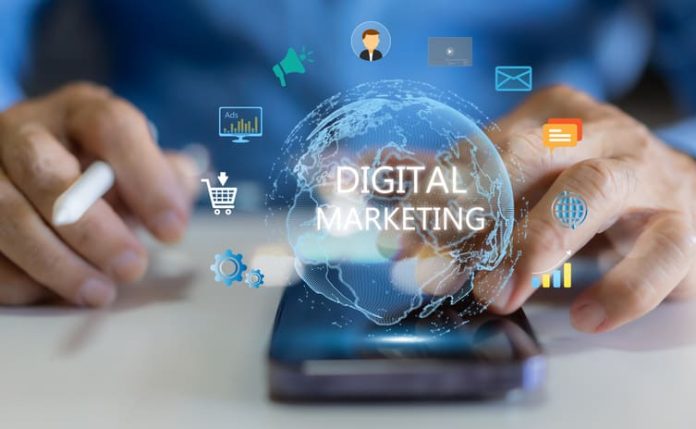Digital marketing is evolving year after year, and keeping up with the latest trends is now a necessity. As technology advances and consumer behavior changes, marketers must adjust their strategies to follow them. Incorporating SEO in Atlantic City into your digital marketing plan can significantly enhance your online visibility and ensure your business stays ahead of the competition.
Here are nine must-watch trends shaping companies’ market, especially in 2024.
Video Marketing Dominance
Video marketing is “running the world” already, and this is not something new. With the advance of technology and social media platforms, we notice every day how fast videos are spreading all over the internet.
People choose videos for entertainment, information, and brand engagement, compared to reading long, time-consuming articles. According to 2024 statistics, people are watching, on average, 17 hours of online videos per week, which tells a lot about their preferences. And did you know that the average person’s attention span is shorter than that of a goldfish? Well, here’s the fun fact: Video marketing holds the key to captivating those fleeting seconds! With its dynamic blend of sight, sound, and motion, videos ignite curiosity and transfer emotions, which is exactly what people want to feel. So, whether it’s a dazzling product demonstration, a fun animation, or a heartfelt brand story, video marketing has the remarkable ability to make us laugh, cry, and click that magical “Share” button.
As a result, this form of marketing is now a powerful tool for people and businesses to captivate and connect with their target audience. It allows brands to convey their messages in many ways while evoking emotions and leaving a lasting impact on viewers.
Apparently, this strategy has been working successfully, as the dominance of video marketing is evident in the success stories of viral videos, brand campaigns, and the popularity of video-sharing platforms.
Voice Search Optimization
We must all agree that voice search optimization has revolutionized how people interact with technology. From smart speakers to voice assistants on smartphones, consumers are embracing the assistance and simplicity of voice search.
Here are some common instances where people tend to use voice search:
- Mobile Devices: Voice search is used very often on smartphones and tablets while on the go. Whether walking, driving, or multitasking, users can speak to find information, make requests, or even find directions quickly.
- Virtual Assistants: Popular virtual assistants like Siri (Apple), Google Assistant, or Cortana (Microsoft) allow users to perform tasks, get answers, and access information hands-free.
- Smartwatches: Voice search can be mobilized on smartwatches and other wearable devices. Users can issue voice commands to perform various tasks, such as checking notifications, setting reminders, or setting up phone calls.
- Home Assistants: Voice search has popularity through devices like Amazon Echo, Google Home, or Apple HomePod. People use smart speakers to play music, get weather updates, set reminders, control smart home devices, and retrieve general information.
- Smart TVs and Streaming Devices: Many modern TVs and streaming devices have built-in voice search capabilities. Users can use their voice to search for specific movies, TV shows, and actors or even control playback functions.
- In-Car Systems: Voice search is particularly popular while driving. It enables drivers to keep their hands on the wheel and their eyes on the road while accessing directions, making calls, playing music, or finding nearby amenities.
Businesses are using content for voice search as part of their digital marketing strategies. Brands and marketers are recognizing the need to adapt their SEO techniques to cater to voice queries. This includes understanding how people use voice search and preparing content that aligns with natural language patterns. They are adapting their content to match the conversational style of voice search queries, using natural language and long-tail keywords.
Businesses can easily secure a spot in featured snippets by providing direct answers to commonly asked questions, gaining visibility in voice search results.
Personalized Marketing Strategies
Generic mass marketing approaches are no longer enough to get the attention and loyalty of consumers. People want to feel special; they love reading or hearing the message they seek. Since brands realized that, they have been doing the most to build personalized marketing strategies that fulfill customers’ preferences.
You probably remember when Coca-Cola launched its “Share a Coke” campaign, where bottles and cans were personalized with popular names. Not only was this a great marketing approach, but it also encouraged customers to find and share their own names or those of loved ones, creating a sense of personal connection.
Spotify is another brand that uses personalized marketing strategies. This is by curating personalized playlists, such as the “Discover Weekly” and “Release Radar,” which show users a customized selection of songs based on their listening habits and music preferences. Netflix shows personalized recommendations based on users’ viewing history, ratings, and preferences to offer a curated selection of movies and TV shows. This approach makes the user experience even better by helping them find content that aligns with their interests.
As a result, one thing is for sure: Personalization equals better visitor experiences, more recommendations, and targeted messaging that resonates with each customer on a deeper level.
For more on effective marketing strategies, you can read our article on B2C Digital Marketing Techniques: How to Effectively Market to Consumers.
Influencer Marketing Evolution
Influencer marketing has evolved significantly in recent years, slowly becoming a trend and a way brands connect with their target audience. Consumers usually turn to influencers for authentic recommendations and relatable content.
Did you know that the evolution of influencer marketing has turned everyday people into public figures? In the early days of influencer marketing, celebrities, and well-known personalities dominated the scene. But with the rise of social media, ordinary individuals with niche interests and engaging content have become influential figures in their own right. From beauty gurus to food enthusiasts, gaming experts to travel lovers, these newfound “micro-influencers” have captured the hearts and attention of loyal followers.
Now, brands are recognizing the power of these relatable influencers, who bring authenticity, and a genuine connection to their communities. So next time you come across a social media superstar, remember that they might have started as an everyday person with a passion, and their influence has shaped the landscape of modern marketing.
However, the influencer marketing landscape is no longer limited to celebrity approvals; it includes various influencers across various niches and platforms. From macro-influencers with millions of followers to influencers with smaller but highly engaged audiences, brands have many options to choose from.
This evolving strategy allows brands to tap into niche markets, build genuine connections, and create more targeted and impactful influencer campaigns.
Augmented Reality (AR) and Virtual Reality (VR)
Augmented Reality (AR) and Virtual Reality (VR) have been the most popular terms in recent years. Not only have they increased the way brands engage with their audience, but they have also provided experiences that captivate and leave a lasting impact on consumers.
AR overlays digital elements in the real world, creating an interactive and unique experience. It enables users to blend the physical and digital domains, offering unique marketing opportunities for businesses or individuals who want to offer a different experience. Brands have harnessed AR to provide virtual try-on experiences, allowing customers to visualize products before purchasing, such as trying on virtual clothing or virtually placing furniture in their homes. AR is also used for interactive packaging, where scanning a product’s packaging with a mobile device triggers entertaining or informative AR content.
VR transports users into simulated environments, completely engaging them in a digital world. This technology is now popular in marketing, offering many opportunities for storytelling and experiential campaigns. Brands use VR to create brand experiences, allowing users to explore virtual spaces, try out products or services, and even take part in virtual events or virtual tours. VR has proven particularly effective in industries like real estate, travel, and gaming, where it allows potential customers to experience properties, destinations, or game environments before making purchasing decisions.
Despite their differences, brands use AR and VR creatively, such as interactive ads, virtual tours, gamified experiences, and product demonstrations. This way, they can differentiate themselves, create memorable experiences, and stand out in the marketplace.
Social Commerce
Social commerce has witnessed a remarkable transformation by integrating e-commerce functionalities within social media platforms. This approach allows brands to showcase and sell products directly to their social media audience without users navigating away from their preferred social platforms.
Platforms like Instagram and Facebook offer shoppable posts and ads, so users can make purchases without leaving the app. Live streaming platforms such as Twitch and TikTok have embraced social commerce, with creators showcasing products during live broadcasts, creating a completely different shopping experience.
Beyond social media, social commerce is also seen on e-commerce websites and marketplaces that incorporate social sharing and user reviews. As social commerce continues to evolve, we can expect its influence to expand more across digital platforms and channels.
Privacy and Data Protection
We are all aware that personal information is being shared online every day of our lives. As this happens, users are becoming more aware of the potential risks of data breaches and unauthorized access.
Privacy ensures that sensitive details, such as financial data, health records, and personal identifiers, remain confidential, protecting individuals from identity theft, fraud, and other malicious activities. Moreover, data protection safeguards against unauthorized access, use, or disclosure of personal data, ensuring that individuals’ information is handled ethically and complies with regulations.
This heightened awareness has made brands prioritize data privacy and adopt strong measures for customer information, whether on websites or other platforms. By addressing these concerns, brands can demonstrate their commitment to protecting customer data, building trust, and maintaining a positive brand reputation in an era where data privacy is of extra importance.
Privacy and data protection maintain trust between businesses and consumers. When companies prioritize privacy, they demonstrate their commitment to respecting customer boundaries, fostering transparency, and preserving the data’s integrity.
Automation and Chatbots
Automation and chatbots have emerged as a game-changing marketing trend, revolutionizing customer interactions. With the power of automation, businesses can leverage technology to handle repetitive tasks, deliver personalized messaging, and provide instant support.




































































